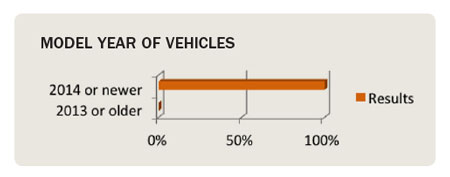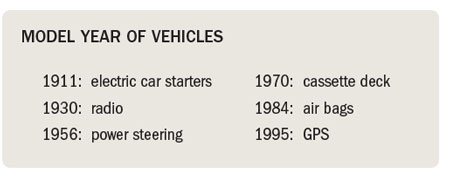By Giovani Forner, Director of Research and Development
Brazil is widely known for its amazing natural beauties and top soccer players, but now a group of engineers from Porto Alegre wants to place the country as a leader also in the automated parking field. Pioneers in providing innovative products, Engeltec developed a new, complete solution for Valet Parking that is shaking the national market, and now they prepare to cross borders, starting with Canada.
Living in a country similar to Canada with continental dimensions, Brazilians love their cars, even though they have to pay among the highest prices in the world to drive them (due, in large part, to high taxes and low market competition). The National Department of Vehicles in Brazil estimates 93,305,422 are currently running through their roads, a number almost three times higher than in Canada. Turning, as a matter of fact, parking into a valuable and competitive business in the South American country.
And Engeltec’s solution is unique to the whole world. It automates the manual steps of bridging all information into one platform. The valet operator needs less people to do the same function, while receiving fast and reliable information from the software. The result is nothing but profit.
The challenge for the Brazilian company, though, was to automate the maximum steps of check-in with no drivers’ interaction. This means the user experience will be as fast as possible, allowing clients to do more with the same amount of human resources from the valet company. Engeltec engineers spent last year perfecting their prototype and now the first model is already in functioning.
One software, three hardwares
The solution combines a software with three simple hardware devices: an OCR camera, a mini Smart Cube and a Pinpark device.
Here’s how it works
The OCR camera recognizes the license plate. Placed above the car, the…
By Chelsea Webster
Let’s start out with a quick poll:
What model year is your vehicle?
Okay so there was only one respondent, but I think it’s safe to say that with new car sales of 3.8 million in Canada1 and 34.5 million in the US in the last 2 years2, there are a LOT of vehicles on our roads that are a 2014 model year or newer.

Why does this matter?
Consider this quick rundown of the major car advances to land in our vehicles.

So, now that internet connectivity is showing up in cars, you can see how such a big change is cause for discussion. We’re basically taking the Internet of Things (if this term isn’t familiar, it’s the concept that everything is now connected on the internet – from your home thermostat to your heart rate monitor to the security camera on the street4) and applying it to vehicles. This concept of the fully connected and communicative vehicle is called the Internet of Vehicles (or IoV as we’ll refer to it).
IoV Fundamentals
Overall, the IoV is a massive network of connection points to the internet which are in constant communication. It’s meant to guide and supervise vehicles while providing abundant multimedia and mobile Internet application services. There are several components to understand within IoV, so let’s go over a few details.
Why would we want this? There are four main benefits of IoV5: safety (if you know the car in front of you is stopping, you can brake early); environmental damage mitigation (use less horsepower to reduce emissions); energy conservation (maximize efficiency in gas consumption); and intelligent communication (avoid a traffic jam, construction, or pay for parking).
Who is the car communicating with? There are several important groups…
By Chelsea Webster
Parking is an easy first step for a municipality to take towards becoming a smart city because the technology already exists, and it can be tested and proven with minimal resources.
Key points
- A Smart City is defined by sensors that collect information and relay it to a hub, which recommends actions based on data analysis. Smart parking is applying this concept to parking.
- Citizen and government engagement and interaction is critical to the success and long term viability of the smart city concepts.
- Smart parking is a subset of the smart city concept that’s easily implemented; pros and cons exist, however the net impact is positive.
- Many other technologies (like autonomous vehicles) are impacting the adoption of smart parking and often creating more questions than answers.
Action: Three actionable suggestions can be found at the end of the article if you are interested in implementing smart parking in your municipality.
What is a Smart City?
The term “Smart City” has been making the rounds lately, and I’d venture a guess you’ve heard it once or twice by now (or perhaps you live and work outside the realm of this concept, which is fine too). But for everyone who has heard it, as much as for those who haven’t, what does it actually mean? For all the hype, it still isn’t listed on Dictionary.com or Merriam-Webster. A smart city is a broad concept, with no precedent, and as of yet, there aren’t set standards as to what defines a city as smart. Oh. Now what?
There are a lot of working pieces involved in the smart city concept, but let’s break it down into two key components: technology (physical and virtual requirements) and data (collection and application).
1. Technology
This is the network of sensors, cameras, and other devices that get built into the…



